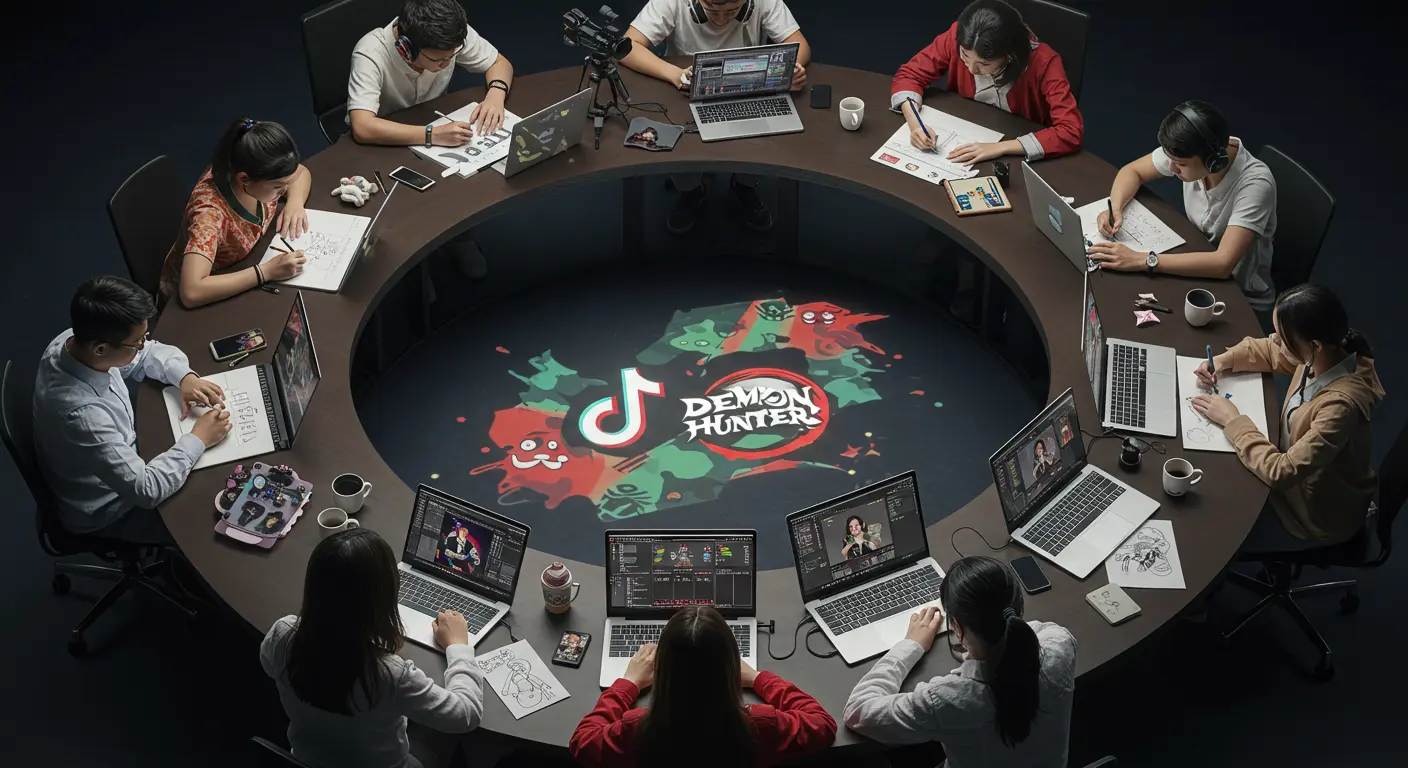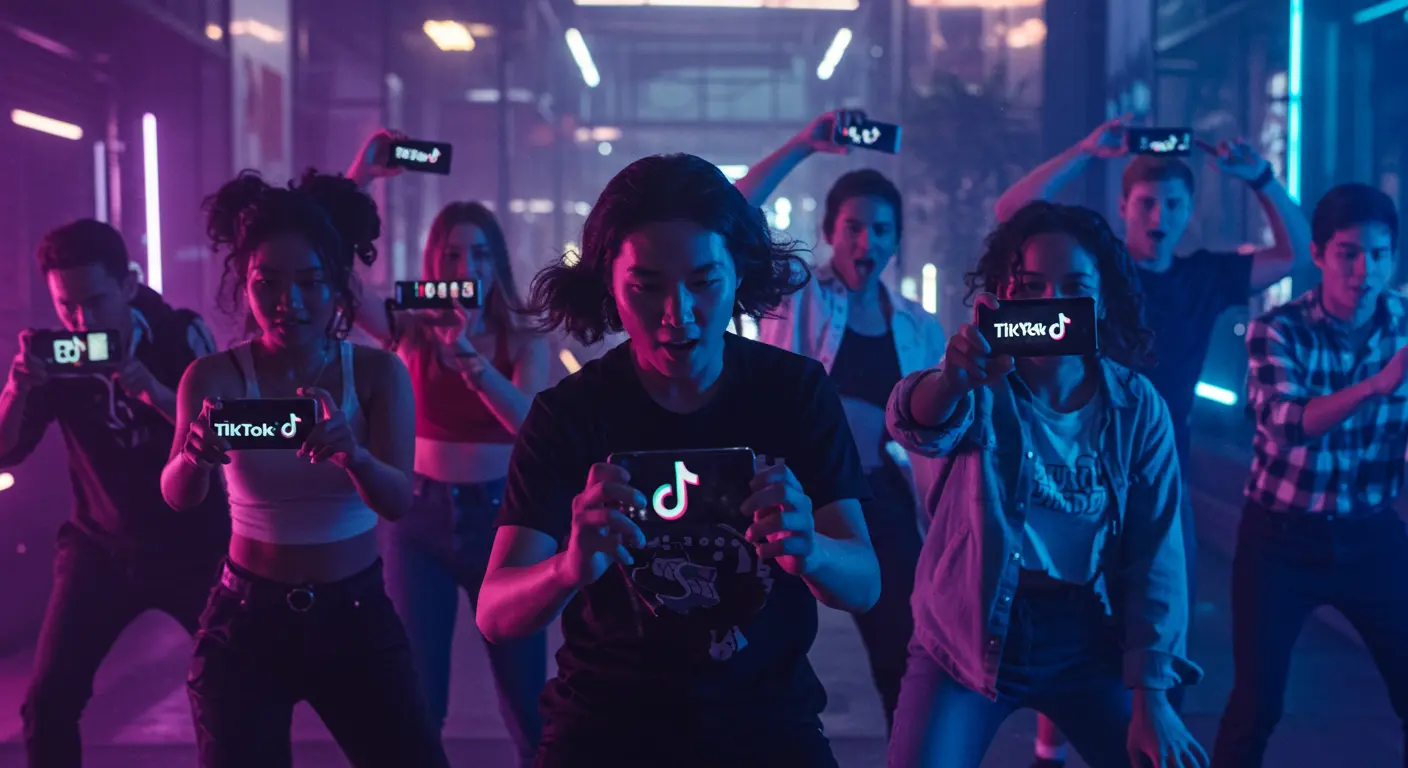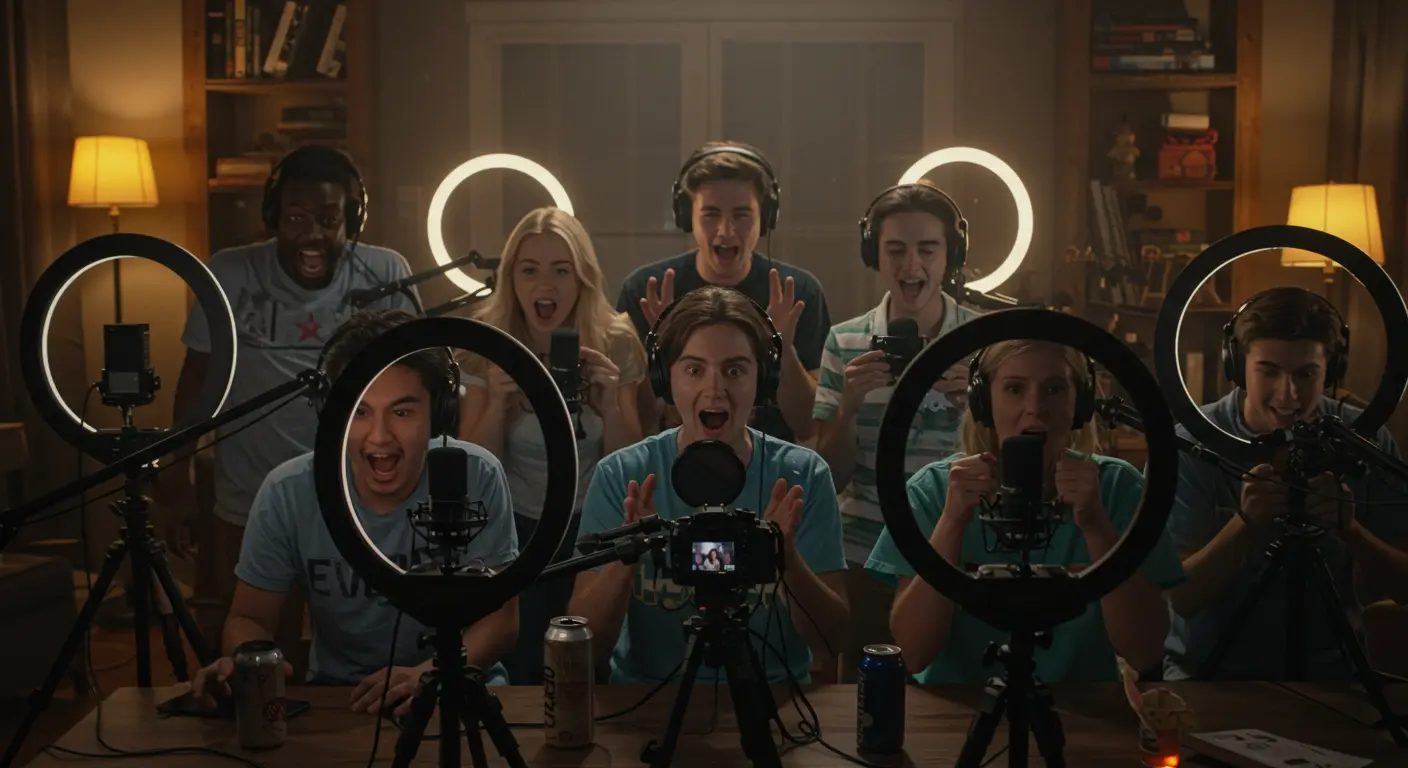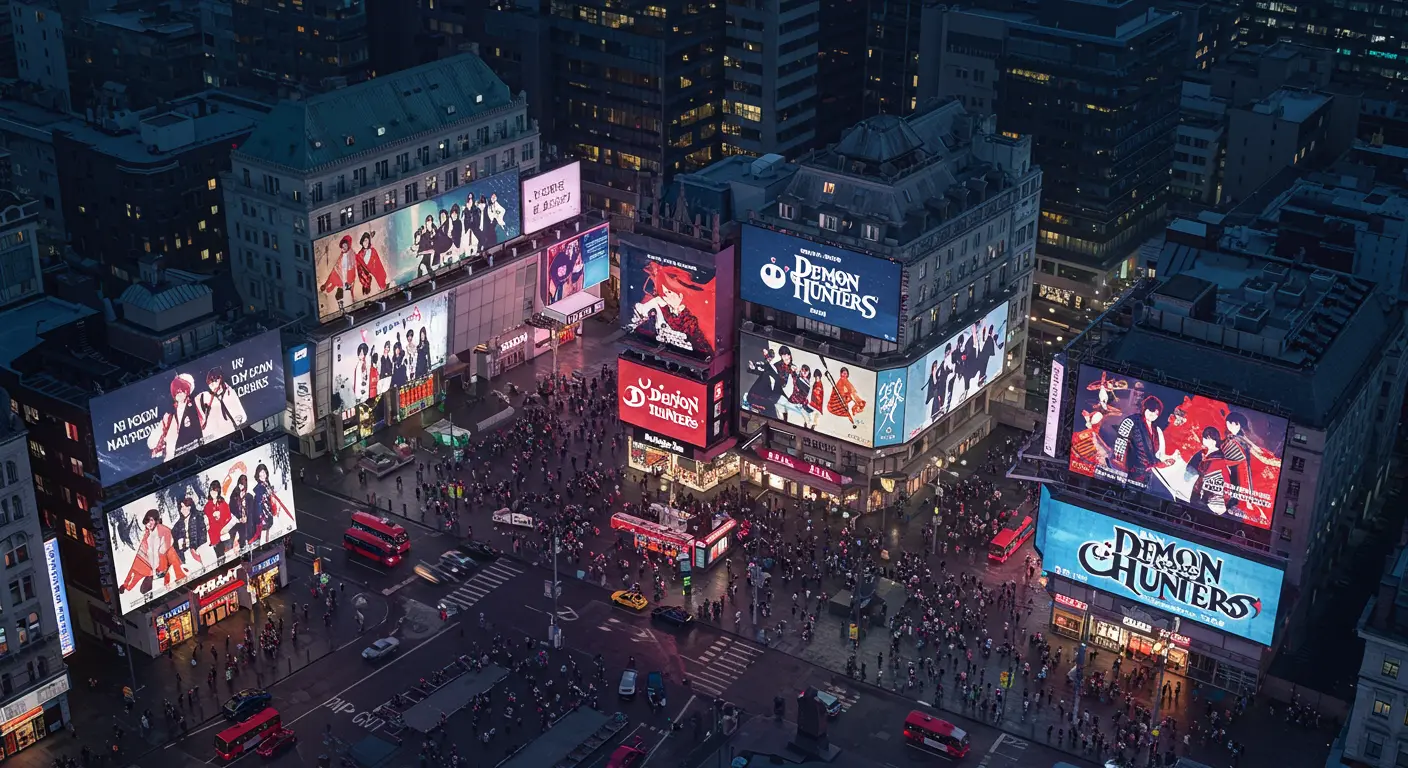Bottom line: More than just a music group, the K-Pop Demon Hunters have become the center of a viral phenomenon that fans around the world are participating in and creating.

The final installment of a four-part series that dives deep into this global phenomenon
Fandom viral success story (complete)
1. the Demon Hunter Challenge that took over TikTok
The #DemonHunterChallenge, which began in December 2024, surpassed 1.8 billion cumulative views worldwide in just three months. It was more than just a dance challenge – it was a new form of viral content that combined creative storytelling. Fans condensed their own exorcism stories into 15 seconds, and it resonated globally.
1. TikTok uploads in the first week: 2.8 million (the most ever for a K-Pop challenge)
2. Participating countries: 67, major languages: 23
3. Influencer engagement rate: 781 TP3T (based on creators with 10K+ followers)
4. Brand Collaboration Challenge: 42 global brands join the party

2. Fan art craze and the creative ecosystem
K-Pop’s Demon Hunters represented an unprecedented phenomenon in fan art creation. Whereas traditional K-Pop fan art focused on the members’ physical appearance, Demon Hunters fan art centered around worldbuilding and storytelling, creating a new creative paradigm in fandom culture.
1. Instagram fan art hashtag posts: 12,000 daily on average
2. Monthly uploads from digital art platform DeventArt: 8,500
3. NFT fan art trading volume: $2.4 million (January-June 2025 year-to-date)
4. Fanfiction platform Archive of Our Own (AO3): 1,847 registered works

3. A New Paradigm in YouTube Reaction Culture
Reaction videos to K-Pop demon hunters’ music videos and performances have created a new kind of content ecosystem: high-quality reaction content that goes beyond simple reactions and combines cultural interpretation and analysis, which in turn amplifies interest in the original work.
1. Cumulative views of YouTube reaction videos: 420 million views
2. 100K+ subscribers Reactor engagement: 156
3. Average Reaction Video Completion Rate: 87.31 TP3T (211 TP3T higher than regular K-Pop)
4. New fans from reaction videos: 341 TP3T

4. voluntary participation from influencers and celebrities
Celebrities ranging from Hollywood actors to NBA players to celebrity chefs voluntarily created and shared K-Pop Demon Hunters-related content, setting a new example of authentic viral marketing that is different from traditional paid advertising or sponsorships.
1. Hollywood A-list celebrity spontaneous mentions: 23 (Ryan Reynolds, Zendaya, etc.)
2. Sports star social media engagement: 67 (Son Heung-min, LeBron James, etc.)
3. Influencer voluntary content creation: 340 per day on average
4. Media mentions: 1,200 in major global media outlets (estimated $85 million in free publicity)
5. Fan-driven global marketing strategy
The most innovative aspect of K-Pop Demon Hunters was that the fans themselves designed and executed the marketing strategy. Fan-generated content often generated more buzz than the official account, creating a new model that broke through the limitations of traditional top-down marketing.
1. Views of fan-generated promotional videos: On average 2.3 times as many as official videos.
2. Global Fandom Alliance events: 15 per month on average (67 countries simultaneously)
3. Fandom-led streaming party attendees: up to 8.9 million for a single event
4. Crowdfunded billboard projects: 47 cities, $2.8 million raised by fans

6. Frequently asked questions (FAQ)
Q1. What makes K-Pop Demon Hunters’ viral success different from other K-Pop groups?
A1. Whereas traditional K-Pop virals focused on dance and visuals, Demon Hunters sparked fans’ desire to create around storytelling and worldbuilding, which led to a deeper and more sustainable fandom culture.
Q2. Is fan-driven marketing really effective?
A2. Fandom-driven marketing outperforms corporate-driven marketing in terms of authenticity and credibility. In fact, fan-generated content often outperforms official content in terms of engagement and virality.
Q3. What is the long-term impact of this viral phenomenon on the K-Pop industry?
A3. The relationship between artists and fandom is shifting from vertical to horizontal. The very way K-Pop spreads globally is evolving, with fans acting as co-creators rather than just consumers.
Q4. Could other K-Pop groups follow suit?
A4. It’s important to develop each group’s own unique world and story rather than copying a strategy. The success of K-Pop Demon Hunters comes from authentic content, not just a marketing strategy.
Q5. What does this shift in fandom culture mean for the music industry as a whole?
A5. The music industry is undergoing a paradigm shift from product-centric to experience-centric. Artists are becoming the center of a cultural phenomenon that they create not only with their music, but also with their fans.
Q6. Can I apply fandom viral marketing to other K-Pop groups?
A6. The key is the group’s unique worldview and content that inspires fans to create. It’s important to develop fan-engaging campaigns that are unique to each group, rather than simply copying strategies.
Q7. How long can this viral phenomenon last?
A7. Unlike one-off trends, K-Pop Demon Hunters has built an ongoing ecosystem of storytelling and fan creation, which is likely to develop into a long-term fandom culture rather than a short-term viral phenomenon.
7. Series wrap-up and outlook
Throughout our four-part analysis of K-Pop Demon Hunters, we’ve witnessed a new paradigm for global entertainment in the 21st century: the global popularity factors discussed in Part 1, the chart performance analysis in Part 2, the cultural convergence in Part 3, and the fandom viral phenomenon in Part 4 all make up one complete success story.
More than just a music group, K-Pop’s Demon Hunters have become a global cultural phenomenon. Their success is expected to set a new standard for not only K-Pop, but the global entertainment industry as a whole. Their fan-driven creation and marketing model is redefining the relationship between artists and fans, creating a richer and more sustainable cultural ecosystem.
1. World tour planned for late 2025 (47 cities, voted on by fans)
2. Netflix documentary series confirmed for production
3. Pursuing a metaverse project with a global gaming company
4. Coming Soon: Official Merchandising Program for Fan Creations
8. related reading
1. Why K-Pop Demon Hunters Are Exploding in Popularity Around the World
2. HUNTR/X・Saja Boys Chart Analysis
3. Korean folklore + K-Pop worldview
5. Behind the Scenes of K-Dramas: 7 Secrets Netflix Hides from You
9. external references
1. TikTok Community Guidelines – TikTok Community Guidelines
2. YouTube Creator Economy Blog – YouTube Creator Economy
3. Billboard Pro – Billboard Pro Music Industry Analytics
